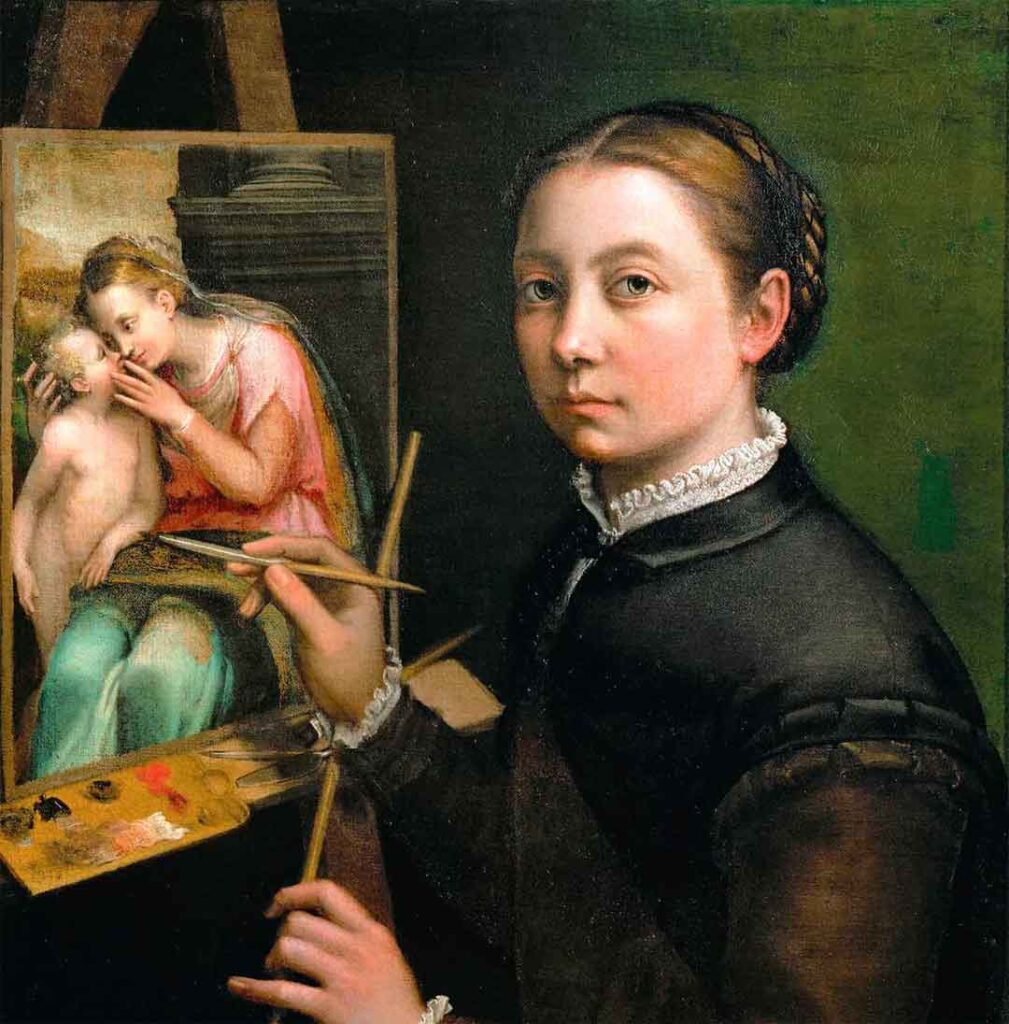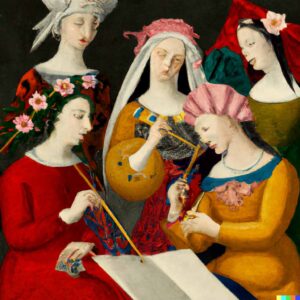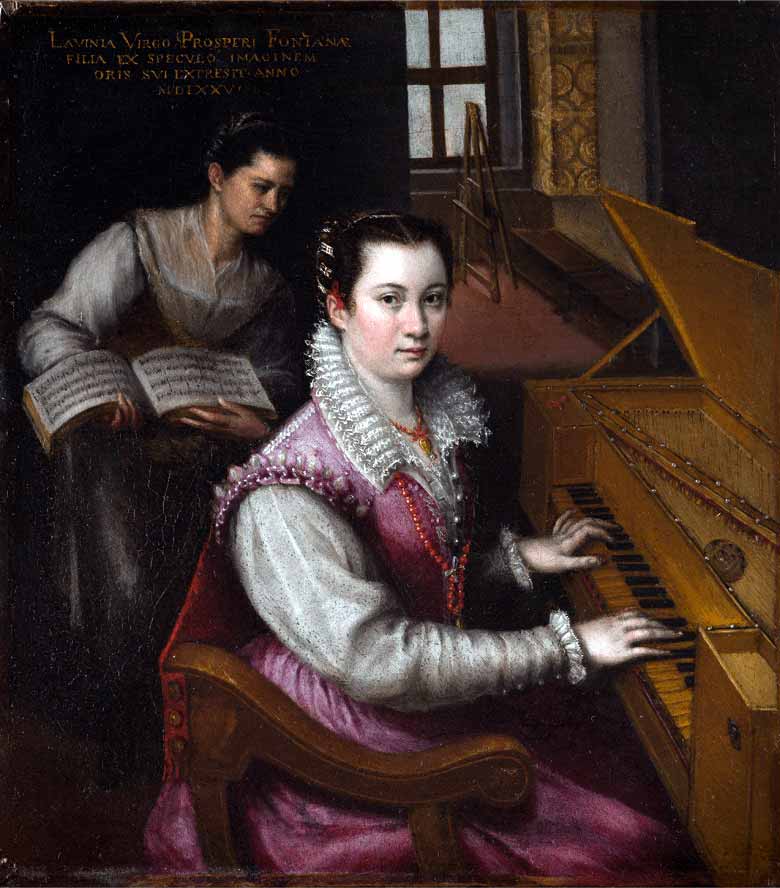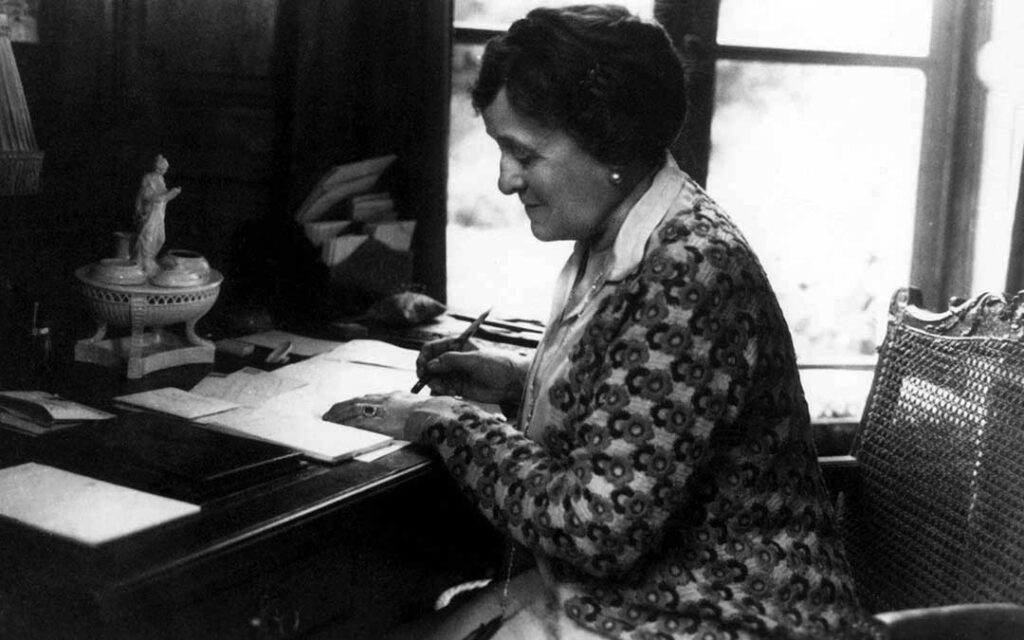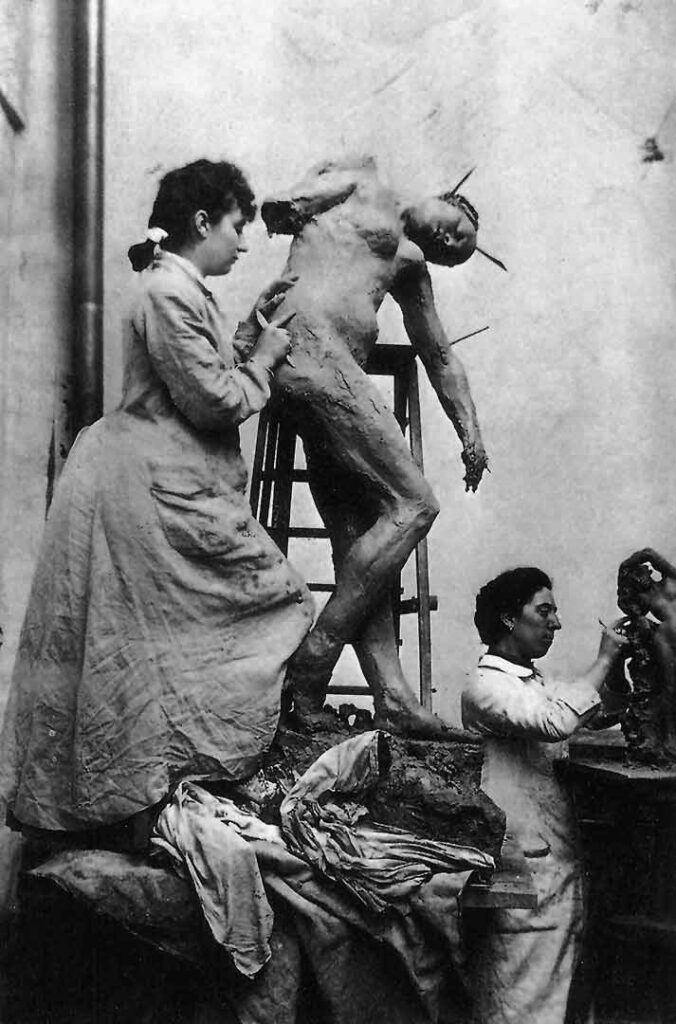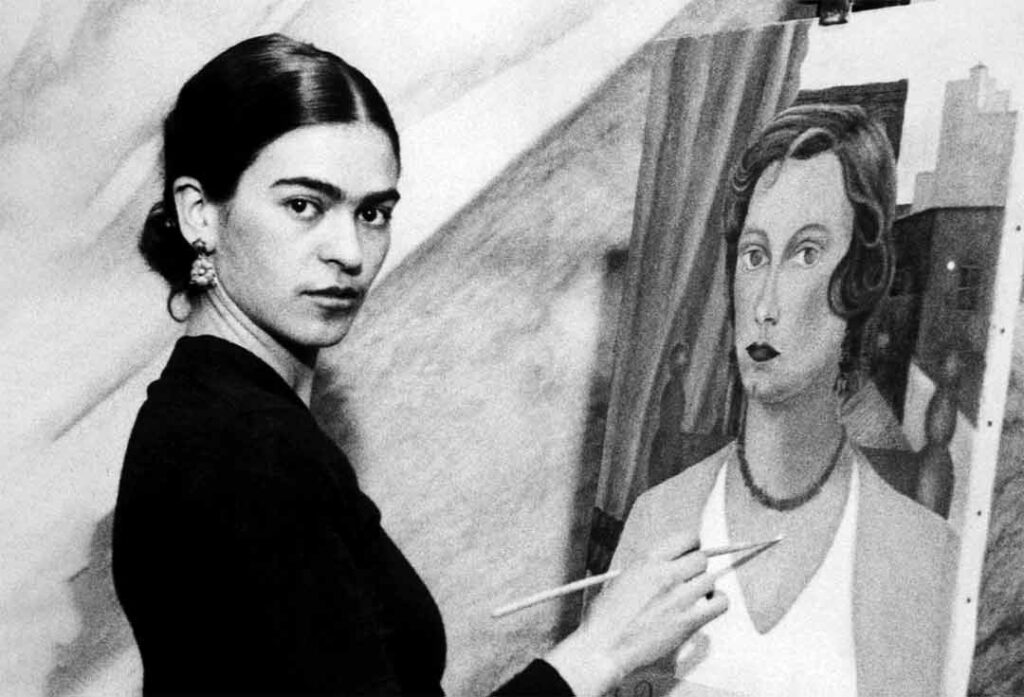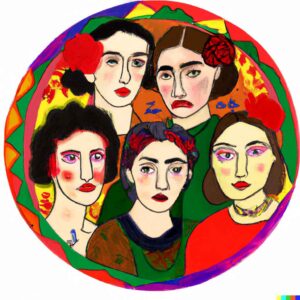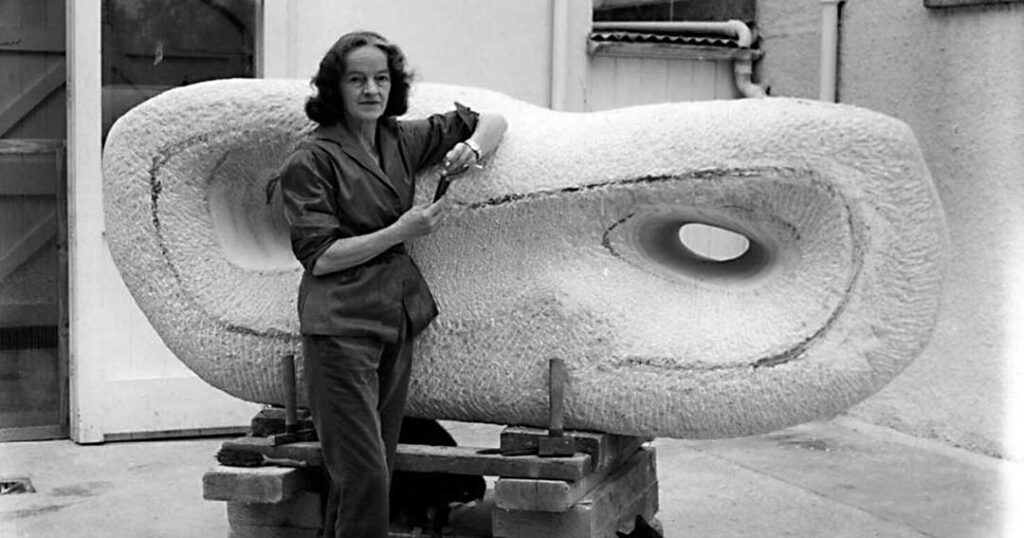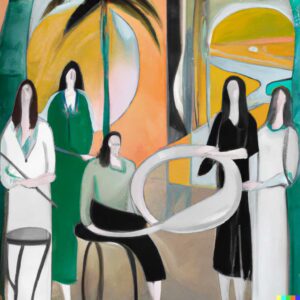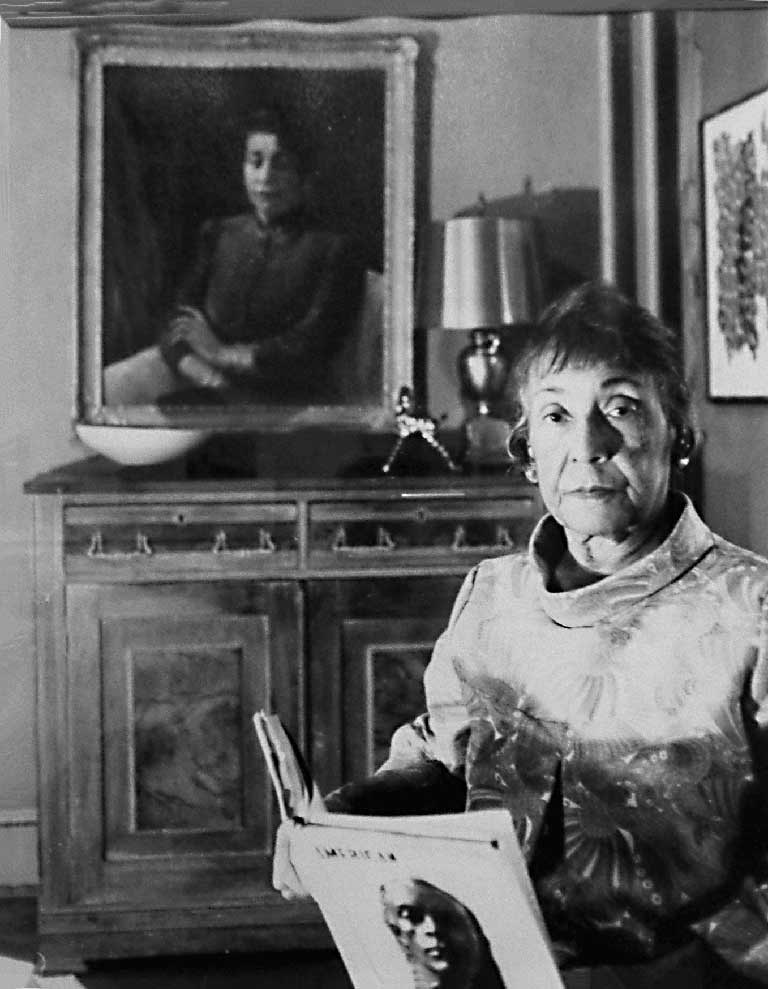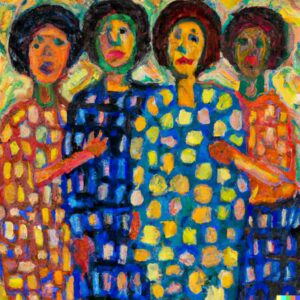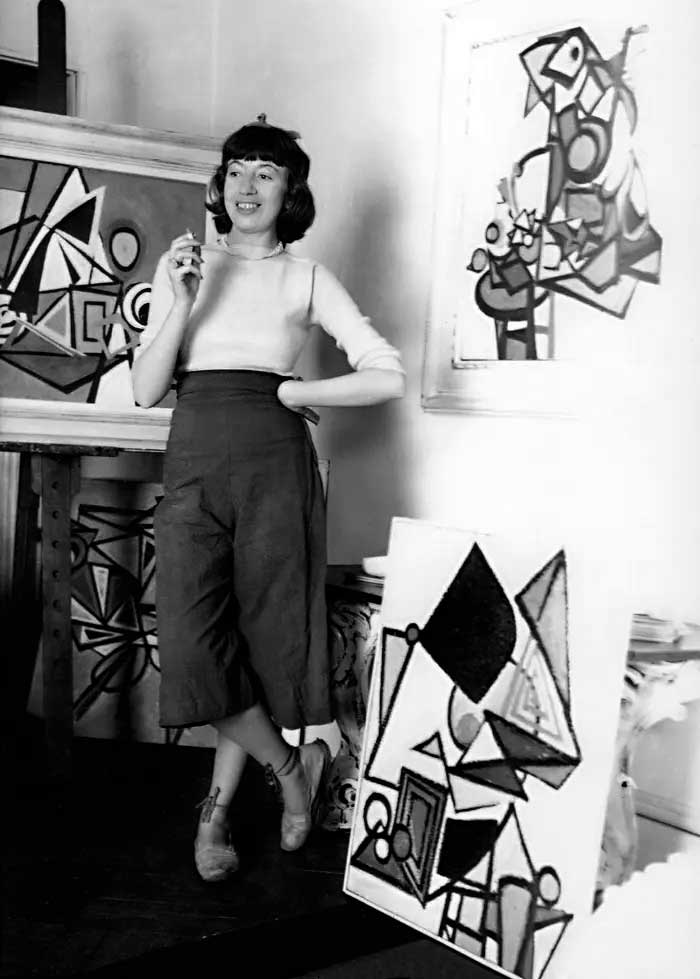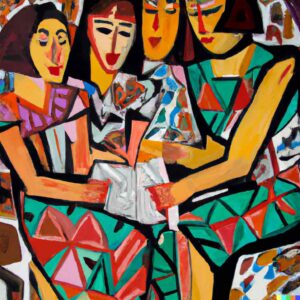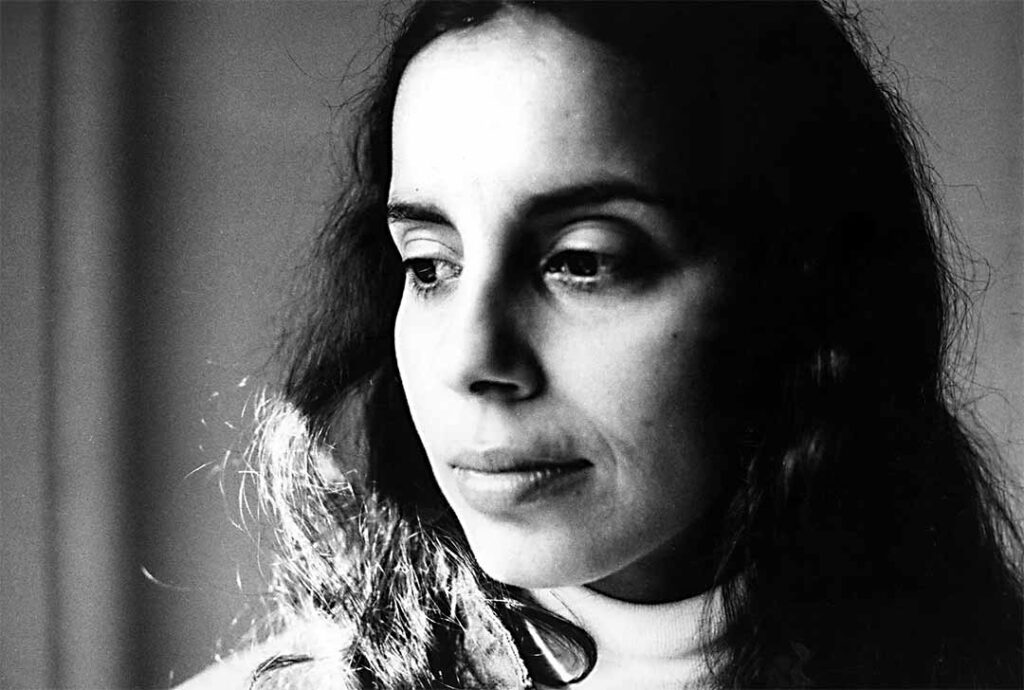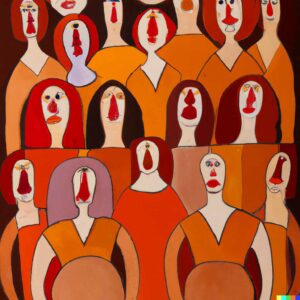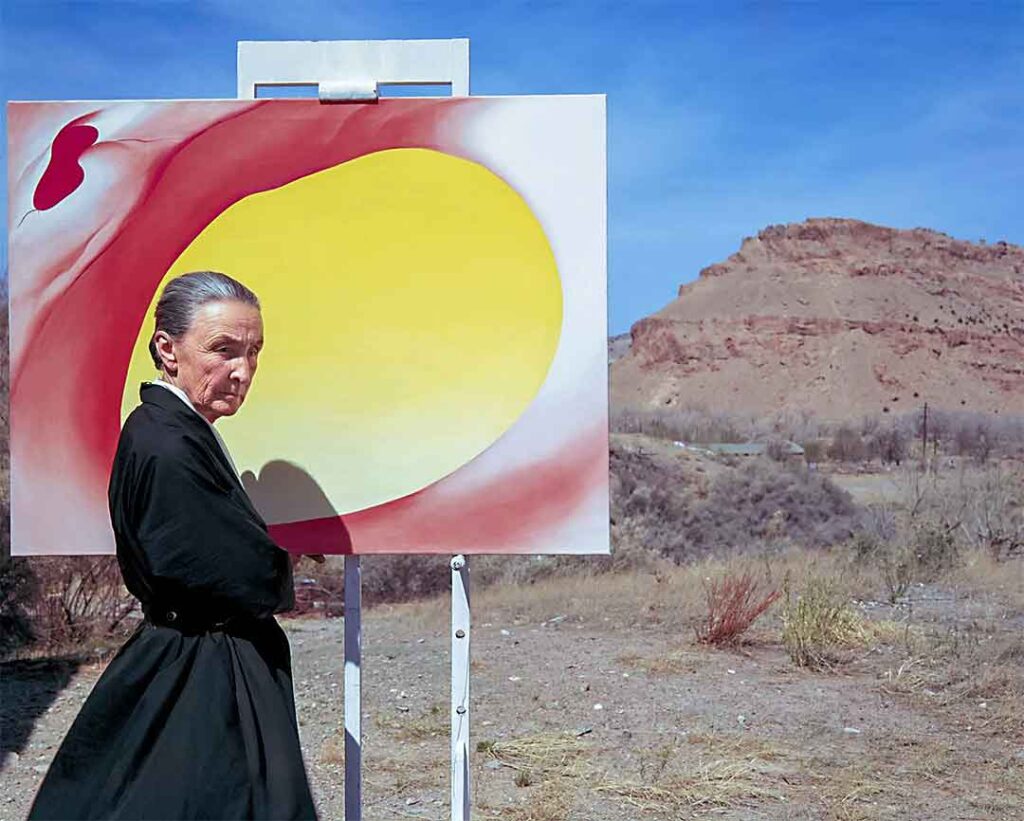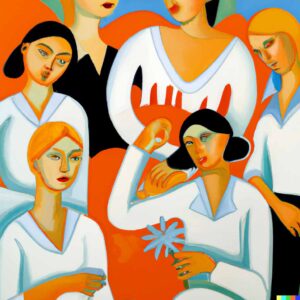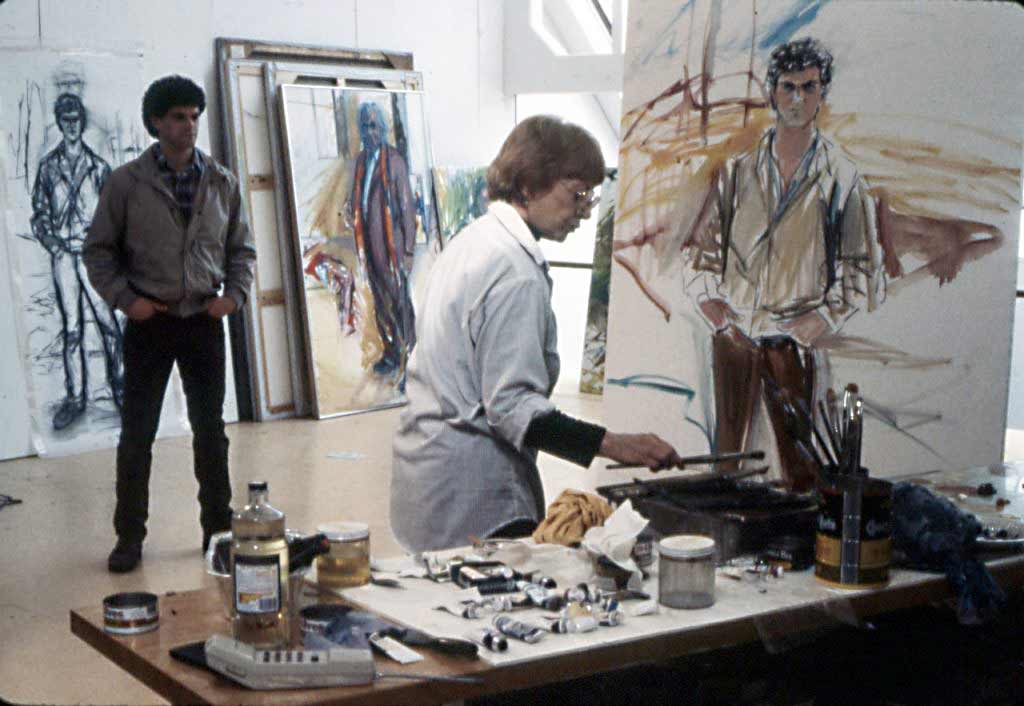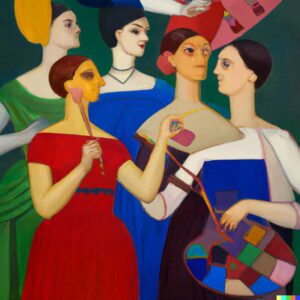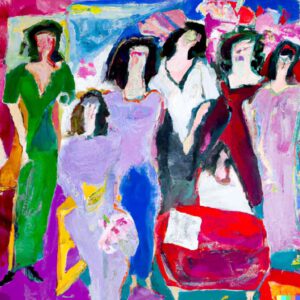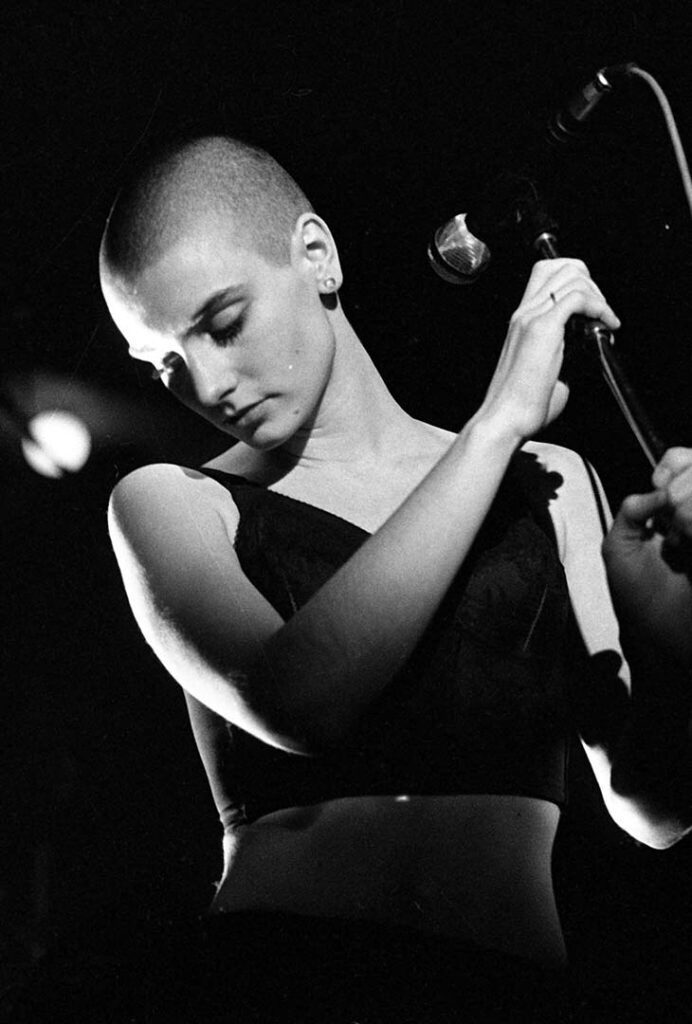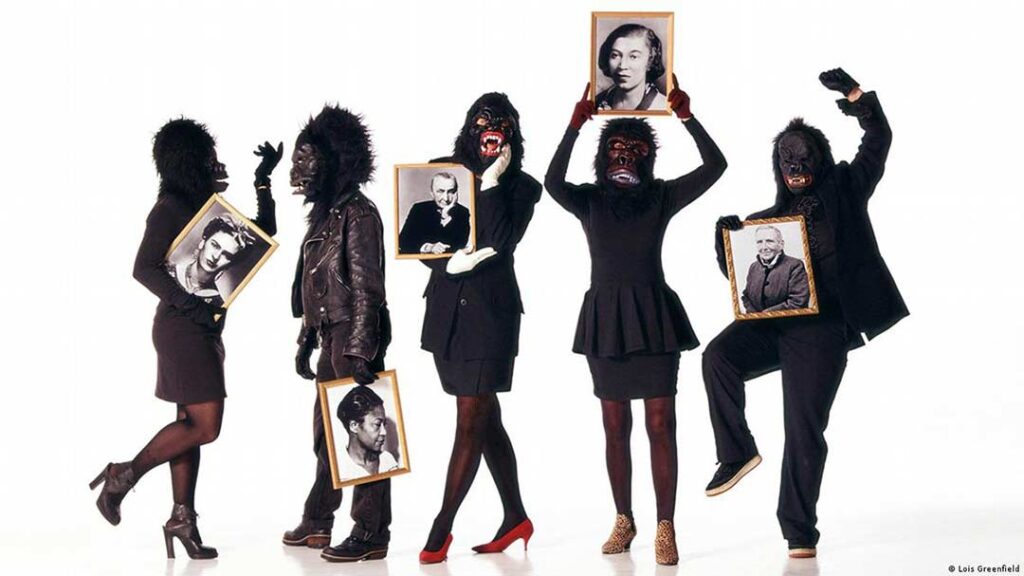- [email protected]
- +353 (0)86 224 0139
- Free Shipping Worldwide
19 Female Artists Who Shattered the Male-Dominated Art World
Discover the vibrant voices of women in art and the life-changing power of creativity. This blog post examines the different viewpoints and experiences of female artists from around the world, showcasing their distinctive talents and accomplishments.
Reading Time: 25 minutes
TL;DR
- Discover the Vibrant Voices of Women in Art: Explore the diverse perspectives and creative expressions of female artists from around the globe, highlighting their unique talents and experiences.
- Celebrate the Achievements of Trailblazing Women in Art History: Learn about the groundbreaking contributions of pioneering female artists, from the Renaissance to contemporary times, and how they paved the way for future generations.
- Empowering Women Through Art: Witness the transformative power of art in the lives of women as they use their creativity to overcome challenges, express their identities, and inspire positive change in their communities.
Introduction: The Importance of Female Artists
For centuries, women have been creating art that showcases their unique perspectives and talents. However, despite their contributions, female artists have often been overlooked or forgotten, with their work attributed to male colleagues or dismissed as inferior. This is not only a loss for the art world, but also for society as a whole. Female artists bring a different perspective to the arts, inspire other women, and challenge the status quo.
Female Artists Provide a Different Perspective
One of the most significant contributions of female artists is the unique perspective they bring to the arts. Women often paint everyday scenes that men don’t typically depict, such as domestic scenes, motherhood, and female friendships. This new perspective lets people see things in a different light and challenges traditional gender roles and stereotypes.
Female Artists Inspire Other Women
Female artists serve as role models for other women, showing that it’s possible to break into male-dominated fields and achieve success. When women see other women succeeding in the arts, it gives them hope and motivation to pursue their own dreams. Female artists also provide a sense of belonging and representation, which is essential for women who have historically been excluded from the art world.
The Art World Often Overlooks Female Artists
Unfortunately, the art world can be unfair, and women’s accomplishments are often overshadowed by the men in their lives. This can be due to assumptions that women are only talented because of their connections to men, rather than their own merit. As a result, many female artists have been left out of the spotlight, while their male colleagues took the credit.
Female Artists Who Deserved More Credit
This blog post aims to celebrate the contributions of female artists who have been overlooked or forgotten throughout history. From the famous female artists of antiquity to contemporary artists, these talented women have made significant contributions to the arts. By highlighting their work and achievements, we can challenge the status quo and promote gender equality in the art world.
So keep reading as we look at 19 female artists, some of whom did not receive the recognition they deserved during their lifetimes.
Background: How the Art World Failed Women
As a father of a young woman who’s interested in the arts, I’ve come to realize that the art world has a long history of failing women. As a male, I recognize that I may be perceived as mansplaining this subject, but I believe it’s essential to shed light on the injustices that female artists have faced.
In the past, many female artists’ works were attributed to male artists, denying them the recognition they deserved. Women had limited access to creative education and were often excluded from professional artistic opportunities. Living in a patriarchal society, they were denied their rights and their signatures had no legal power.
The art world’s failure to recognize and support female artists has had far-reaching consequences. Many talented women were overlooked, and their contributions to the art world were marginalized. This not only affected their careers but also perpetuated a gender imbalance in the industry.
Today, as we strive for gender equality, it’s essential to acknowledge the art world’s past mistakes and work towards a more inclusive future. By supporting and celebrating female artists, we can ensure that their talents are recognized and their contributions are valued.
The History of Women in Art
Until the 1970s, men dominated both the history of art and the industry, due to patriarchal attitudes that marginalized women’s contributions. Many artworks by women were frequently stored in museum vaults during the twentieth century, denying them the recognition they deserved.
In 1971, Linda Nochlin, a famous American feminist art historian and critic, rose to prominence with her groundbreaking piece “Why Have There Been No Great Women Artists?” published in ARTnews. Nochlin’s article sparked a wave of feminist art history, which has since addressed a range of female perspectives on the subject and challenged the male-dominated narrative of art history.
Despite significant challenges in training, marketing, and exhibition opportunities, brilliant artists have always been able to establish themselves and expose their works to a receptive public. Women artists, particularly in modern times, developed tactics to overcome limitations in artists’ associations, the art market, and public perception. As a result, it was critical for female artists to be confident in their activities and appearance, and to assert their place in the art world.
Here are some key points to consider:
- Women were marginalized in the art world for centuries due to patriarchal attitudes.
- Many artworks by women were stored in museum vaults, denying them recognition.
- Linda Nochlin’s article “Why Have There Been No Great Women Artists?” sparked a wave of feminist artists.
- Women artists have faced challenges in training, marketing, and exhibition opportunities.
- Women artists have developed tactics to overcome limitations and assert their place in the art world.
Why Were Female Artists Overlooked in the Past?
There are several reasons why many female artists have been forgotten or overlooked throughout history. One major reason is that women have been denied access to the same educational and professional opportunities as men, making it challenging for them to become professional artists and have their work recognized.
Gender Bias in History
Another reason for the lack of recognition of female artists is the historical bias in favor of male artists.
The art world has traditionally been a male-dominated field, leading to a bias in favor of male artists and their work. Female artists have often been overlooked or dismissed, and their work has not been given the same level of attention and respect as the work of male artists.
Furthermore, men have historically written the history of art, leading to a lack of awareness of the contributions of female artists. Women’s art has often been ignored or marginalised, and their stories have not been told which highlights the gender inequality in art.
Who Is The Non-Objectivism Female Artist?
The non-objectivism female artist is Sophie Taeuber-Arp. She was a Swiss artist who was active in the early 20th century. She is best known for her abstract paintings and sculptures. Taeuber-Arp was a pioneer of non-objectivism, which is a style of art that does not represent any recognizable objects or figures.
Audit of Gender and Ethnicity in Art
Women continue to be marginalized in the art world, as evidenced by the lack of representation in major museums and galleries. A study in the peer-reviewed open access journal published by the Public Library of Science (PLOS ONE) in 2019 found that:
- 87% of the artists represented were male
- 85.4% were white
- 9.0% were Asian
- 2.8% were Hispanic/Latinx
- 1.2% were Black/African American
- 1.5% were from other ethnicities
This lack of representation has a negative impact on the careers of artists, as women and artists from diverse backgrounds are less likely to be taken seriously or given opportunities to show their work. Many top galleries specialise in art from earlier periods, when opportunities for women were far more restricted, and are run by men. Unfortunately, when large amounts of money are involved, politics often goes out the window.
However, there are signs that views are slowly beginning to shift, and there is a growing recognition of the importance of diversity and inclusion in the arts. However, there is still gender inequality in many fields, and this is before considering other diverse countries and cultures.
What is the Gaze in Art & Visual Theory?
Gazes in art have played a significant role in shaping the way we perceive and interpret artworks. Many scholars have argued that the gaze is a powerful tool that can be used to create meaning in artworks.
The concept of gazes refers to the act of looking, observing, and being observed within the context of art. It encompasses various perspectives, including the artist’s gaze, the viewer’s gaze, and even the subject’s gaze within a piece of artwork.
Furthermore, the gaze as an art concept can be used as a radical technique of resistance when we stare back on those who try to define us. The oppositional gaze opposes the act of looking back.
Throughout history, artists have utilized gazes as a powerful tool to convey emotions, narratives, and social commentary. From Renaissance masterpieces to contemporary works, gazes have been employed to evoke empathy, challenge societal norms, or provoke introspection.
The artist’s gaze holds immense importance as it reflects their intentions and artistic choices. It can capture moments of vulnerability or assert dominance over their subjects. By carefully crafting the direction and intensity of a subject’s gaze, artists can guide viewers’ attention and influence their emotional response.
Equally significant is the viewer’s gaze – how we engage with an artwork and interpret its meaning. Our individual experiences, cultural backgrounds, and personal biases shape our perception of gazes depicted in art. The viewer becomes an active participant in deciphering hidden narratives or engaging with visual dialogues initiated by the artist.
Gazes in art also shed light on societal dynamics and power structures prevalent during different periods. They can challenge traditional gender roles or expose social inequalities by subverting established norms through unconventional gazes, for example:
The male gaze refers to the way in which art has traditionally been created from a heterosexual male perspective, objectifying women as passive objects of desire. This gaze has influenced countless artworks, perpetuating gender stereotypes and reinforcing power dynamics.
On the other hand, the homosexual gaze challenges traditional notions of sexuality and explores alternative perspectives within art history. It examines how LGBTQ+ artists have depicted their own experiences and desires, often subverting societal norms and offering new narratives from the mainstream.
Another important but less explored aspect is the lesbian gaze in art history. This perspective focuses on representing lesbian experiences through the visual arts, challenging heteronormative narratives, and providing visibility to lesbian identities.
Similarly, the female gaze offers a counterpoint to the male gaze by presenting women as active subjects rather than passive objects. It seeks to reclaim agency for women in art by portraying their experiences, desires, and perspectives authentically.
The use of gazes in art serve as a captivating lens through which we explore human emotions, societal constructs, and cultural contexts. They invite us to contemplate our own perspectives while unraveling layers of meaning embedded within artworks across time periods and artistic movements.
Their Legacy Lives On: Celebrating the Achievements of Famous Female Artists who Changed the World
Art history is often synonymous with the names of male artists who have left an indelible mark on the art world. However, there are countless female artists whose contributions have been overlooked.
These women defied societal expectations and pursued their passion for art, creating masterpieces that deserve recognition. In this blog section, we will explore 19 female artists who have been obscured either by the men in their lives, or chauvinistic and misogynistic societies, but whose work is highly respected and admired today.
AI Illustrations
To enhance the next section of my blog, I decided to leverage generative AI to create illustrations that pay tribute to each featured artist. I provided a straightforward prompt: “A painting of a group of female artists in the style of [Artist Name].” This approach allows the AI to generate images that not only mimic the chosen artist’s style but also imagines a scene that could exist within their oeuvre.
The resulting illustrations serve as a visual homage, offering readers a unique aesthetic experience that complements the written content. By blending historical styles with contemporary technology, these generated images spark a dialogue between the legacies of renowned artists and the innovations of today. Each image becomes a fresh interpretation of familiar styles, providing a unique perspective on the art world’s rich heritage.
The author generated images in part with DALL-E, an artificial intelligence program developed by OpenAI that creates digital images from textual descriptions. Upon generating this language, I take ultimate responsibility for the content of these images.
AI’s Gender Bias: Unveiling the Hidden Truth
As AI technology continues to revolutionise our world, it’s crucial to recognise the potential for bias within the datasets it’s trained on. These datasets, often reflecting historical and societal norms, may inadvertently perpetuate gender stereotypes and discrimination.
The irony lies in the fact that AI, which promises to promote equality and inclusion, may actually reinforce existing power structures. This is because the datasets that feed AI algorithms are often skewed by a historically male-dominated world.
To address this issue, systems could include and adopt feminist data practices and gather gender-relevant datasets. This means diversifying the sources of data, ensuring representation for all genders and intersectional identities, and critically analysing the data for biases.
By adopting these practices, we can create AI systems that are fair, inclusive, and truly reflect the diverse world we live in. We can harness the power of technology to break down barriers and create a more equitable future for all.
1) Sofonisba Anguissola (1532-1625): Breaking Free from the Shadows
Sofonisba Anguissola was one of the first Italian Renaissance female artists who broke free from the shadows of the male-dominated art world and achieved international acclaim. Despite the challenges she faced as a female artist, Anguissola’s exceptional talent was recognized by renowned artists such as Michelangelo. Her portraits are known for their realism, psychological insight, and technical mastery, and she is considered a pioneer among female artists.
Born into a noble family in Cremona, Italy, Anguissola received an advanced education and apprenticed with two local master painters. Her talent for portraiture was evident from a young age, and she quickly gained a reputation as one of the most promising artists in Italy.
In 1559, she was invited to serve as court painter to Philip II of Spain, where she remained for the next 20 years, painting portraits of the royal family and other members of the Spanish aristocracy.
Anguissola’s Self-Portrait at a Spinet (1554-1555) is one of her most famous works, depicting her playing the spinet with direct and confident gaze. Her Portrait of Queen Ana de Austria (1573) is another notable work, celebrating the Queen’s beauty and status. Anguissola’s work was highly admired by her contemporaries, including Michelangelo, who praised her “skill in painting portraits.”
Anguissola’s legacy is one of inspiration and perseverance. Despite the challenges she faced as a female artist, she was able to achieve great success and recognition. Her portraits are still admired today for their beauty, skill, and insight, and she is a reminder of the importance of representation.
Anguissola’s work helped to challenge the traditional view of women in art and paved the way for other women to succeed in the arts. She is an inspiration to all artists, regardless of their gender or background, and her legacy continues to inspire and empower future generations of artists.
2) Lavinia Fontana (1552-1614): Defying Expectations and Creating Her Own Path
Lavinia Fontana was a groundbreaking artist who overcame numerous obstacles to become one of the most successful and celebrated painters of her time. Born into a family of artists, Fontana was trained in her father’s workshop and quickly developed her own unique style, characterized by realism, elegance, and psychological insight.
Fontana’s early portraits showcase her sharp attention to detail, rich colors, and sumptuous fabrics, while her religious and mythological paintings display her ability to challenge traditional gender roles and bring a new level of realism and emotion to these subjects. Her portraits of female saints and martyrs are particularly notable for their sensitivity and psychological depth, capturing the unique personality of each sitter while conveying their social status and wealth.
Fontana’s work had a significant impact on other artists, both male and female, and her legacy continues to inspire and amaze us today.
Some of Fontana’s most famous paintings include:
- Portrait of the Coozzadini Family (1584)
- Assumption of the Virgin with Saints Peter Chrysologus and Cassian (1584)
- Portrait of Gerolamo Mercuriale (1589)
- Venus and Cupid (1592)
- Portrait of Costanza Alidosi (c. 1595)
- Apollo and the Muses (Parnassus) (1598-1600)
- The Visit of the Queen of Sheba to King Solomon (1599)
- Judith with the Head of Holofernes (1600)
Lavinia Fontana was a truly exceptional artist who defied expectations and created her own path. Her work continues to inspire and amaze us today.
3) Artemisia Gentileschi (1593-1656): Overcoming Trauma and Social Patriarchy
Artemisia Gentileschi was a trailblazing Italian Baroque painter who defied social patriarchy and overcame trauma to create powerful works of art.
Born in Rome to painter Orazio Gentileschi and his wife Prudentia, Artemisia showed artistic talent from a young age. Her father trained her, and she later worked with her father’s colleagues.
In 1611, Artemisia’s life was turned upside down when she was raped by Agostino Tassi, a painter and friend of her father’s. Tassi was eventually convicted of rape, but not before subjecting Artemisia to a traumatic trial.
Despite the trauma, Artemisia continued to paint, producing some of her most powerful works in the years following the rape. These works often depicted women overcoming violence and oppression.
Artemisia’s work was not without its critics. Some were uncomfortable with her depictions of female violence, while others dismissed her as a mere imitator of her father. However, Artemisia was determined to succeed as an artist in her own right.
Artemisia traveled extensively throughout Italy, working for patrons in Rome, Florence, and Naples. She also became one of the first female artists to be admitted to the prestigious Accademia delle Arti del Disegno in Florence.
Artemisia’s work is now celebrated for its originality, power, and emotional depth. She is considered one of the most important female artists of all time, and her work continues to inspire and challenge viewers today.
In addition to the paintings mentioned above, here are some of Artemisia Gentileschi’s other famous works:
- Self-Portrait as Saint Catherine of Alexandria (1615-1617)
- The Beheading of Saint John the Baptist (c. 1620-1625)
- Lucretia (c. 1626-1632)
- The Annunciation (c. 1630)
- The Rest on the Flight to Egypt (c. 1630)
- The Martyrdom of Saint Lawrence (c. 1633)
- Cleopatra (c. 1633-1635)
- The Conversion of the Magdalen (c. 1635)
- David and Goliath (c. 1638-1640)
- The Birth of Saint John the Baptist (c. 1642-1644)
Gentileschi’s work is a testament to her strength and resilience in the face of adversity. She overcame trauma and patriarchy to become one of the most important artists of her time.
4) Berthe Morisot (1841-1895): Breaking Barriers in the Impressionist Movement
Berthe Morisot was a trailblazing French painter and a member of the Impressionist movement, one of the few women to achieve success in the male-dominated art world of the 19th century.
Born into a wealthy family, Morisot received a privileged upbringing and began painting at a young age. She studied under the renowned Barbizon painter Camille Corot and later exhibited her work at the Salon de Paris.
In the late 1860s, Morisot met Édouard Manet, who became her mentor and close friend. Manet introduced her to the Impressionist style, and Morisot’s work became more fluid and spontaneous.
Morisot exhibited her paintings in all eight of the Impressionist exhibitions, the only female artist to participate in all of them. Despite facing immense scrutiny and criticism as a woman in a male-dominated field, Morisot’s work was critically acclaimed and successful during her lifetime.
Morisot’s work is characterised by its intimate portrayals of everyday life, delicate brushwork, and luminous colors. She often painted her family and friends, as well as scenes from her own life, creating a sense of depth and atmosphere in her paintings.
Some of Morisot’s most famous paintings include:
- The Young Lady with the Fan (1866)
- The Balcony (1868)
- The Cradle (1872)
- The Woman with the Umbrella (1873)
- The Young Lady with the Parasol (1874)
- Summer (1874)
- The Boating Party (1874)
- The Mirror (1875)
- The Young Lady with the Basket of Flowers (1875)
- The Young Lady with the Muff (1881)
- The Old Woman Sewing (1882)
Morisot was a pioneer in the Impressionist movement and helped to break down barriers for women artists. Her work is still admired today for its beauty, sensitivity, and originality.
5) Edith Wharton (1862-1937):
Edith Wharton was a groundbreaking American author, playwright, and poet who captured the lives and morals of the Gilded Age elite. Born into a wealthy New York family, Wharton received a privileged upbringing and began writing at a young age. Her first novel, The Valley of Decision, published in 1902, was a critical and commercial success, establishing her as a major literary figure.
Wharton’s masterpiece, The Age of Innocence, published in 1920, won the Pulitzer Prize for Fiction in 1921 and is considered one of the greatest American novels ever written. The novel explores love, betrayal, and social convention in New York City during the Gilded Age.
Wharton wrote over forty books during her lifetime, including novels, short stories, plays, and travelogues. Some of her other notable works include:
- The House of Mirth (1905)
- Ethan Frome (1911)
- The Custom of the Country (1913)
- The Mother’s Recompense (1916)
- The Glimpses of the Moon (1922)
- The Buccaneers (1938)
A complex and multifaceted figure, Wharton was a feminist who was critical of the social conventions of her time, yet she was also a product of her own upbringing and class. Her work reflects her own ambivalence about the society in which she lived and continues to be relevant to readers today.
In addition to her literary achievements, Wharton was a successful businesswoman and interior designer. She founded her own interior design firm in 1919 and published several books on the subject. Wharton was also a passionate advocate for women’s rights and social justice.
Wharton died in 1937 at the age of 75, leaving behind a legacy as one of the most important American writers of the early 20th century.
6) Hilma af Klint (1862-1944): Pioneer of Abstract Art
Hilma af Klint was a Swedish artist and mystic whose paintings are considered among the first abstract works known in Western art history. A considerable body of her work predates the first purely abstract compositions by Kandinsky, Malevich and Mondrian.
She belonged to a group called “The Five”, comprising a circle of women inspired by Theosophy, who shared a belief in the importance of trying to contact the so-called “High Masters”—often by way of séances.
Af Klint’s paintings are often filled with symbolic imagery, including flowers, animals, and geometric shapes. She believed that these images represented spiritual truths and principles. Her work is often described as “mystical” or “spiritual”.
Af Klint’s early paintings were figurative, but she began to experiment with abstraction in the early 1900s. In 1906, she began working on a series of paintings called “The Paintings for the Temple”, which is considered her most important work. This series consists of 193 paintings, which are divided into seven groups. Each group explores a different spiritual theme, such as the nature of reality, the soul, and the afterlife.
Af Klint’s work was not exhibited publicly until after her death. In 2018, a major retrospective of her work was held at the Guggenheim Museum in New York City. This exhibition helped to bring af Klint’s work to the attention of a wider audience and to establish her as a major figure in the history of abstract art.
Af Klint’s work is significant for several reasons:
- She was one of the earliest artists to create abstract art.
- Her work is highly original and innovative.
- Her work is infused with spiritual meaning.
Af Klint’s work is a testament to her creativity, her vision, and her commitment to exploring the spiritual dimensions of art.
7) Virginia Woolf (1882-1941): A Feminist Icon of Modernism
Adeline Virginia Woolf was an English novelist, essayist, biographer, and feminist. She was one of the leading figures of the modernist movement in literature. Woolf’s work is known for its stream-of-consciousness style, its complex characters, and its exploration of themes such as gender, identity, and consciousness.
Woolf was born into a wealthy and privileged family. She received a private education, but she was never allowed to attend university because she was a woman. Woolf’s early life was marked by tragedy. Her mother died when she was only 13 years old, and her father died a few years later. Woolf also suffered from mental illness throughout her life.
Despite her personal challenges, Woolf became one of the most important and influential writers of the 20th century. Her novels include:
- Mrs. Dalloway (1925)
- To the Lighthouse (1927),
- Orlando: A Biography (1928),
- The Waves (1931).
Woolf also wrote several essays and non-fiction books, including A Room of One’s Own (1929), which is considered a classic feminist text.
Woolf’s work was groundbreaking in many ways. She was one of the first writers to explore the inner lives of women in a realistic and authentic way. She also wrote about complex and controversial topics such as sexuality and mental illness. Woolf’s work has had a profound impact on subsequent generations of writers and thinkers.
Here are some of the ways in which Virginia Woolf’s work has impacted literature:
- She pioneered the use of stream-of-consciousness narration, which allows readers to experience the thoughts and feelings of characters in real time.
- She created complex and nuanced female characters who were not simply defined by their relationships to men.
- She explored controversial topics such as sexuality and mental illness with honesty and sensitivity.
- She challenged traditional notions of gender roles and identity.
- She inspired other writers, both male and female, to experiment with new forms and styles of writing.
Virginia Woolf’s work is still relevant today. Her novels and essays offer insights into the human condition that are as true today as they were when she wrote them. Woolf’s work is also a reminder of the importance of fighting for equality and justice for all people.
8) Camille Claudel (1864-1943): A Tragic Tale of Talent and Obsession
Camille Claudel was a French sculptor whose work is considered among the most important and innovative of the late 19th and early 20th centuries. She is best known for her sculptures of dancers, female figures, and allegorical subjects. Claudel’s work is characterized by its emotional intensity, its technical virtuosity, and its unique vision of the human form.
Claudel was born into a middle-class family in Villeneuve-sur-Fère, France. She began sculpting at a young age and showed remarkable talent. In 1884, she moved to Paris to study with the sculptor Alfred Boucher. Boucher was a successful artist, but he was also a demanding teacher. Claudel quickly surpassed him in skill and creativity.
In 1885, Claudel met Auguste Rodin. Rodin was one of the most famous sculptors in the world at the time, and he was immediately impressed by Claudel’s talent. He invited her to work as his assistant, and they soon began a passionate love affair.
Even though Rodin plainly signed several of her works, he was not treating her differently because of her gender; artists at the period usually signed their apprentices’ work. Many, however, condemn Rodin for failing to acknowledge or promoting her.
Claudel and Rodin collaborated on many projects, and she played a significant role in his success. However, their relationship was also tumultuous. Rodin was a jealous and possessive lover, and he refused to acknowledge Claudel’s contributions to his work.
In the early 1890s, Claudel began to exhibit her work independently of Rodin. She received critical acclaim for her sculptures, but she was never able to achieve the same level of commercial success as Rodin.
In 1898, Claudel broke up with Rodin. The breakup was devastating for her, and her mental health began to deteriorate. In 1905, she was committed to a psychiatric hospital. She spent the rest of her life in and out of hospitals, where she was subjected to inhumane treatment.
Claudel died in the psychiatric hospital in Montdevergues, France, in 1943. She was buried in an unmarked grave.
Claudel’s tragic story is a reminder of the challenges faced by female artists in a male-dominated society. She was a brilliant and talented sculptor, but she was never able to achieve the recognition and success she deserved. Claudel’s work is now being rediscovered and celebrated, and she is rightly considered one of the most important sculptors of the modern era.
Here are some of the reasons why Camille Claudel’s work is so significant:
- She was one of the few female sculptors to achieve prominence in the late 19th and early 20th centuries. Her work is characterized by its emotional intensity, its technical virtuosity, and its unique vision of the human form.
- She was a pioneer of modern sculpture, and her work helped to pave the way for other female sculptors, such as Louise Bourgeois and Frida Kahlo.
- Her work is still relevant today, and it continues to inspire artists and art lovers alike.
This story is also a reminder of the importance of mental health awareness and support. She was a brilliant and talented artist, but her mental illness prevented her from achieving her full potential. We must continue to work to create a society where people with mental illness are treated with compassion and respect.
9) Frida Kahlo (1907-1954): Beyond Diego Rivera’s Shadow
Frida Kahlo is one of the most iconic and celebrated artists of the 20th century. Her work is known for its raw emotionality, its bold colors, and its unflinching depiction of the female experience. Kahlo’s paintings often explore themes of identity, sexuality, pain, and loss.
Kahlo was born in Coyoacán, Mexico, in 1907. At the age of six, she was involved in a bus accident that left her with lifelong physical and emotional scars. Kahlo spent much of her youth and young adulthood in and out of hospitals. During these times, she began to paint as a way to express herself and to cope with her pain.
In 1929, Kahlo married the famous Mexican painter Diego Rivera. Rivera was much older than Kahlo, and he was a dominant and controlling figure in her life. Despite their difficult relationship, Rivera played an important role in Kahlo’s artistic development. He introduced her to other important artists and intellectuals, and he helped her to get her work exhibited.
Kahlo’s paintings began to attract attention in the early 1930s. She had several successful exhibitions in Mexico and the United States. In 1938, she was invited to exhibit her work at the prestigious Julien Levy Gallery in New York City. This exhibition was a critical and commercial success, and it helped to establish Kahlo as a major international artist.
Kahlo’s work is often described as surrealist, but she rejected this label. She said that she painted her reality, not her dreams. Kahlo’s paintings are deeply personal and introspective. They explore her own experiences with pain, loss, and identity. Her work is also influenced by Mexican folk art and pre-Columbian art.
Kahlo’s paintings are often self-portraits. She used self-portraiture to explore her own identity and to express her complex emotions. Her self-portraits are often raw and honest, and they do not shy away from depicting her physical and emotional scars.
Beyond Diego Rivera’s Shadow
Frida Kahlo was often overshadowed by her husband, Diego Rivera. However, she was a talented and original artist in her own right. Her work is now recognised as being among the most important and influential of the 20th century.
Kahlo’s work is significant for several reasons:
- She was one of the few female artists to achieve prominence in the early 20th century.
- Her work is deeply personal and introspective. She used art to explore her own experiences with pain, loss, and identity.
- Her work is influenced by Mexican folk art and pre-Columbian art, which helped to introduce these traditions to a wider audience.
Kahlo’s work continues to inspire artists and art lovers around the world. She is a role model for women and for people who have experienced pain and loss. Her work is a reminder that it is possible to find beauty and strength in the midst of suffering.
10) Barbara Hepworth (1903-1975): A Pioneer of Abstract Sculpture
Sharing the same birthday as myself, Barbara Hepworth was a British sculptor who is considered one of the leading figures of modern abstract art. Her work is characterized by its organic forms, its use of negative space, and its celebration of the natural world.
Hepworth was born in Wakefield, Yorkshire, England, in 1903. She studied art at the Leeds School of Art and the Royal College of Art in London. In the early 1930s, she began to experiment with abstract sculpture. She was influenced by the work of Constantin Brancusi and Pablo Picasso, but she quickly developed her own unique style.
Hepworth’s sculptures are often made of wood, stone, or bronze. She was particularly interested in the use of negative space. She often carved holes and openings in her sculptures, creating a sense of movement and lightness. Hepworth’s sculptures are also inspired by the natural world. She often used organic forms, such as seeds, pods, and shells, in her work.
Hepworth’s work has been exhibited in galleries and museums all over the world. She is considered one of the most important sculptors of the 20th century. Her work is still relevant today, and it continues to inspire artists and art lovers alike.
Hepworth’s Significance
Hepworth’s work is significant for several reasons:
- She was one of the few female sculptors to achieve prominence in the early 20th century.
- Her work was highly original and innovative. She was one of the pioneers of abstract sculpture in Britain.
- Her work is deeply infused with a sense of spirituality and a love of the natural world.
Hepworth’s work has had a profound impact on subsequent generations of sculptors. Her work is still studied and admired by artists and art lovers around the world. She is a true icon of modern art.
11) Alma Thomas (1891-1978): A Trailblazer for African-American Women Artists of Her Time
Alma Thomas was a pioneering African-American artist who is best known for her abstract paintings. She was born in Columbus, Georgia, in 1891, and she studied art at Howard University in Washington, D.C. After graduating from Howard, Thomas taught art for over 35 years at Shaw Junior High School in Washington, D.C.
Thomas began to experiment with abstract art in the early 1960s. She was inspired by the work of Color Field painters such as Morris Louis and Gene Davis. Thomas’s abstract paintings are characterized by their bold colors, their geometric forms, and their sense of movement.
Thomas’s work was initially met with resistance from the art world. However, she eventually gained recognition for her innovative and groundbreaking work. In 1972, she became the first African-American woman to have a solo exhibition at the Whitney Museum of American Art in New York City.
Thomas’s work is now considered to be among the most important and influential of the 20th century.
Significance of Alma Thomas’s Work
Thomas’s work is significant for several reasons.
- She was one of the few African-American women artists to achieve prominence in the mid-20th century.
- Her work was highly original and innovative. She was one of the pioneers of abstract art in the United States.
- Her work is infused with a sense of joy and optimism.
Thomas’s work has had a profound impact on subsequent generations of artists. She is a role model for African-American artists and women artists alike. Her work is a reminder that it is possible to break down barriers and achieve success, regardless of one’s race or gender.
Legacy
Thomas’s legacy is one of inspiration and perseverance. She was a true pioneer in the art world, and her work continues to inspire and challenge artists and art lovers alike. Thomas’s work is a reminder that everyone has the potential to create something beautiful and meaningful, regardless of their background or circumstances.
12) Tamara de Lempicka (1898-1980)
Tamara de Lempicka was a Polish-born artist who is best known for her Art Deco portraits and nudes. She was born in Warsaw, Poland, in 1898, and she studied art in Italy and France. Lempicka’s work is characterized by its sleek, stylized figures, its bold colors, and its use of geometric shapes.
Lempicka’s early life was marked by tragedy. She was orphaned at the age of 14, and she was forced to live with her aunt and uncle. In 1916, she married Tadeusz Łempicki, a wealthy Polish lawyer. The couple moved to Paris, where Lempicka began her career as an artist.
Lempicka’s work quickly gained popularity in the 1920s. She was a celebrity in her own right, and her work was featured in magazines and newspapers around the world. Lempicka’s portraits of fashionable women and wealthy men were seen as the embodiment of the Art Deco era.
In 1928, Lempicka divorced her husband and married Raoul Kuffner, a wealthy Austrian art collector. The couple moved to the United States, where Lempicka continued to paint. Her work became more abstract in the 1940s and 1950s, but she never abandoned her signature style.
Lempicka continued to paint until her death in 1980. She is considered one of the most important artists of the Art Deco movement. Her work is still admired today for its beauty, style, and glamour.
13) Lee Krasner (1908-1984): The Unsung Hero of Abstract Expressionism
Lee Krasner was a pioneering American abstract expressionist painter who is often overshadowed by her more famous husband, Jackson Pollock. However, Krasner was a talented artist in her own right, and her work is now recognized as some of the most important and innovative of the Abstract Expressionist movement.
Krasner was born in Brooklyn, New York, in 1908. She began studying art at a young age and attended the Women’s Art School of Cooper Union and the National Academy of Design. In the 1930s, she was introduced to the work of Hans Hofmann, a German-born artist who was teaching a new approach to painting based on Cubism and expressionism. Hofmann’s teachings had a profound influence on Krasner’s work, and she began to develop her own unique style of abstraction.
In the 1940s, Krasner became a prominent figure in the New York art scene. She was part of a circle of artists that included Pollock, Willem de Kooning, and Mark Rothko. These artists were experimenting with new ways of painting, and their work came to be known as Abstract Expressionism.
Krasner’s paintings are characterized by their bold colors, gestural brushstrokes, and energetic compositions. She often used large canvases and poured paint directly onto the surface. Her work was often personal and emotional, and she explored themes of love, loss, and identity in her paintings.
In the 1950s, Krasner’s work became increasingly expressive and gestural. She was influenced by the death of her husband, Pollock, in 1956, and her paintings from this period are often dark and brooding. However, Krasner continued to experiment with new forms and techniques, and her work from the 1960s and 1970s is some of her most innovative and powerful.
Krasner’s work is now held in major museums around the world, including the Museum of Modern Art in New York, the Tate Modern in London, and the Centre Pompidou in Paris. She is recognized as one of the most important and influential female artists of the 20th century.
Why Lee Krasner is an unsung hero of Abstract Expressionism
Despite her critical and commercial success, Krasner is often overlooked when discussing the Abstract Expressionist movement. This is likely due to the fact that she was married to Pollock, who is considered to be one of the most important artists of the movement. However, Krasner’s work is equally important and innovative, and she deserves to be recognized as one of the leading figures of Abstract Expressionism.
Here are a few reasons why Lee Krasner is an unsung hero of Abstract Expressionism:
- She was a pioneer in the development of Abstract Expressionism. Krasner’s work from the 1940s is some of the earliest examples of Abstract Expressionist painting.
- She was a highly skilled and innovative artist. Krasner’s paintings are characterized by their bold colors, gestural brushstrokes, and energetic compositions. She also experimented with new materials and techniques, such as pouring paint directly onto the canvas.
- She was a prolific artist. Krasner produced a large body of work over the course of her career, including over 1,000 paintings.
- She was a role model for other female artists. Krasner was one of the few female artists who was successful in the male-dominated art world of the 1940s and 1950s. She paved the way for other female artists to achieve success.
Lee Krasner was a talented and innovative artist who made significant contributions to the Abstract Expressionist movement. She is an unsung hero of the movement, and her work deserves to be more widely known and appreciated.
14) Ana Mendieta (1948-1985): A Pioneer of Earth Art and Performance
Ana Mendieta was a Cuban-American artist who is best known for her earth art and performance work. She was born in Havana, Cuba, in 1948, and fled to the United States with her older sister in 1961, at just 12 years old. She studied art at the University of Iowa, where she began to develop her signature style of using her body and the natural world to explore themes of identity as a female emigrant, spirituality, and violence.
Mendieta’s work often dealt with the trauma of exile and displacement. She was deeply affected by her experience of leaving Cuba, and her work often explored the idea of being uprooted from one’s home and culture. For example, her series of “Siluetas” (silhouettes) involved burying her body in the ground or placing her body prints in natural landscapes. These works were a way for her to connect with her own roots and to create a sense of place for herself in the world.
Mendieta was also a powerful advocate for women’s rights and rights of minorities. Her work often explored themes of gender, sexuality, and violence against women. For example, her series of “Blood Works” involved using her own blood to create images of female bodies. These works were a way for her to confront the violence and oppression that women face.
¿Dónde está Ana Mendieta?
Mendieta tragically died at the age 36 after falling from her apartment window in New York. Her husband Carl Andre is still alive today, having been acquitted of her murder.
Here are some of her most famous works:
- Untitled (Siluetas, Mexico) (1974): In this series of photographs, Mendieta buried her body in the ground in various locations in Mexico. The silhouettes of her body are a powerful reminder of the human presence in the natural world.
- Untitled (Rape Scene) (1973): This performance piece involved Mendieta covering her body in cornmeal and lying in a field. The piece was a powerful statement about the violence and oppression that women face.
- Blood Works (1974-1977): In this series of works, Mendieta used her own blood to create images of female bodies. The works were a way for her to confront the violence and oppression that women face.
Mendieta’s work is still relevant today. It is a powerful reminder of the importance of art as a way to explore important social and political issues.
15) Georgia O’Keeffe (1887-1986): An American Icon
Georgia O’Keeffe was an American modernist artist who is known for her close-up paintings of flowers, bones, and landscapes. Her work is often characterized by its bold colors, sharp lines, and sensual forms.
O’Keeffe was born in Sun Prairie, Wisconsin, and studied art at the Art Students League of New York and the Columbia University Teachers College. In 1916, she met the photographer Alfred Stieglitz, who became her mentor and lover. Stieglitz was a strong advocate for O’Keeffe’s work, and he exhibited her paintings in his gallery, 291.
O’Keeffe’s early work was influenced by European modernism, but she soon developed her own unique style. She began to paint close-up views of natural objects, such as flowers, bones, and shells. Her paintings of flowers are particularly famous, and they have been interpreted as symbols of female sexuality and fertility.
In 1929, O’Keeffe and Stieglitz married and moved to New Mexico. O’Keeffe was inspired by the desert landscape of New Mexico, and she began to paint images of bones, skulls, and rocks. She also painted landscapes of the Pedernal, a mountain that was visible from her house in Abiquiú.
O’Keeffe’s work has been exhibited in major museums around the world, and she is considered to be one of the most important American artists of the 20th century. Her paintings are celebrated for their beauty, their originality, and their exploration of female sexuality and the natural world.
Here are some of her most famous works:
- Jimson Weed (1936)
- Black Iris (1930)
- Cow’s Skull: Red, White, and Blue (1931)
- Ram’s Head with Hollyhock (1935)
- Summer Days (1936)
- Sky Above Clouds (1932)
- Red Poppy (1927)
- Music Pink and Blue (1946)
- Ladder to the Moon (1939)
- Abiquiú Door (1930)
- The Pedernal (1938)
- From the Faraway, Nearby (1937)
16) Elaine Marie Catherine de Kooning (née Fried) (1918-1989): A Trailblazer in Abstract Expressionism
Elaine de Kooning was a seminal figure in the Abstract Expressionist movement. She was born Elaine Marie Catherine Fried in Brooklyn, New York, in 1918. She began painting in the early 1940s, and her work quickly gained attention for its bold, energetic style.
De Kooning was one of the few female artists to be associated with Abstract Expressionism, which was largely dominated by men, such as her husband Willem. She was also one of the few artists in the movement to paint both abstract and figurative works.
Her abstract paintings are characterised by their thick brushstrokes, vibrant colors, and sense of movement. Her figurative paintings, on the other hand, are often more somber and introspective.
One of de Kooning’s most famous paintings is Woman I (1950-52). This painting is a powerful and disturbing image of a woman with a distorted face and aggressive body language. It has been interpreted as a reflection of de Kooning’s own conflicted feelings about her identity as a woman and an artist.
In the late 1950s, de Kooning began to paint images of bullfights. These paintings are characterized by their violence and raw energy. They are also notable for their use of both abstract and figurative elements.
In the 1980s, de Kooning began to paint a series of works inspired by the cave paintings of Lascaux. These paintings are characterized by their earthy colors and primitive forms. They are also notable for their use of negative space.
De Kooning was a prolific and innovative artist. Her work has had a major influence on subsequent generations of artists. She died in 1989 at the age of 70.
Here are some of her most famous works:
- Woman I (1950-52)
- Bullfight (1959)
- Cave Walls (1983)
- Reclining Nude (1955)
- Portrait of Thomas B. Hess (1956)
- Portrait of Harold Rosenberg (1956)
- The Butcher (1945)
- Abstraction (1953)
- Door to the River (1960)
- Pastorale (1963)
- Mount Sinai (1978)
- Bacchus (1980)
Elaine de Kooning was a groundbreaking artist who helped to shape the Abstract Expressionist movement. Her work is still celebrated today for its originality, power, and beauty.
16) Marie Françoise Gilot (1921-2023): A Talented Artist and Courageous Woman
Marie Françoise Gilot was a French artist and memoirist who is best known for her long, stormy relationship with Pablo Picasso. She was born in Neuilly-sur-Seine, France, in 1921, to a wealthy family. She began studying art at a young age, and she quickly developed her own unique style.
In 1943, Gilot met Picasso, who was 45 years her senior. They began a relationship, and they had two children together, Claude and Paloma. Gilot’s relationship with Picasso was often tumultuous, and she eventually left him in 1953.
After leaving Picasso, Gilot continued to paint and write. She published several books, including her memoir, Life with Picasso (1964), which was a bestseller and a critical success. Gilot’s work has been exhibited in major museums around the world, and she is considered to be one of the most important artists of the 20th century.
Gilot’s art is characterized by its bold colors, expressive brushstrokes, and strong sense of emotion. She often painted portraits, still lifes, and landscapes. Her work is often described as being both figurative and abstract.
Gilot was a courageous woman who faced many challenges in her life. She was a single mother who had to raise two children on her own. She was also a woman in a male-dominated art world. Despite these challenges, although Gilot achieved great success as an artist and a writer her professional career was eclipsed by her social celebrity.
Gilot died in New York City in 2023 at the age of 101. She was a remarkable woman who left a lasting legacy on the world of art.
Here are some of Gilot’s most famous works:
- Portrait of Picasso (1945)
- Claude and Paloma (1946)
- The Bath (1950)
- The Orchard (1952)
- Self-Portrait (1953)
- The Blue Landscape (1954)
- The Garden (1960)
- The Woman with the Green Hat (1962)
- The Yellow Landscape (1964)
- The Red Landscape (1966)
- The White Landscape (1968)
Gilot’s work is still celebrated today for its beauty, its power, and its expression of the human condition.
17) Tracey Emin (1963- ): A Confessional Icon
Tracey Emin is one of the most famous female artists working today. She is known for her confessional and autobiographical artwork, which explores themes of sexuality, identity, and trauma. Emin’s work is often raw and emotional, and she has not been afraid to tackle controversial subjects.
Emin was born in Croydon, England, in 1963. She had a difficult childhood, and her experiences have informed much of her work. In 1994, she graduated from the Royal College of Art in London. She quickly rose to prominence as part of the Young British Artists (YBAs), a group of artists who emerged in the late 1980s and early 1990s.
Emin’s work has been exhibited in major museums and galleries around the world. Some of her most famous works include:
- Everyone I Have Ever Slept With 1963–1995 (1995): A blue tent appliquéd with the names of everyone Emin had ever slept with, including sexual partners, relatives, and her two aborted children.
- My Bed (1998): Emin’s own unmade, messy bed installed at the Tate Gallery.
- More Than Words (2015): A neon text sculpture that reads “Kiss My Nose.”
Emin’s work has been praised for its honesty, intimacy, and vulnerability. She has also been criticized for her self-indulgence and for exploiting her own experiences. However, there is no doubt that Emin is a powerful and important artist. Her work has challenged and inspired audiences around the world.
How Has Tracey Emin’s Work Influenced Art?
Emin’s work has had a significant influence on contemporary art. She has helped to popularise confessional art, and she has inspired other artists to be more open and honest about their lives. Her work has also helped to give a voice to marginalized groups and to raise awareness of their issues.
Emin’s work has also been influential in terms of its use of materials and techniques. She often uses everyday objects and materials in her work, such as beds, tents, and neon text. This has helped to break down the boundaries between high art and low art.
18) Sinéad O’Connor (1966-2023): A True Legend
I can’t help but not mention Sinéad O’Connor who sadly passed away on July 26, 2023, Herne Hill, London.
The iconic Irish singer, is not just a musical legend, reclaiming identity through her art, but also a champion for the underdog and stood up for what she believed in. Her shaved head was a statement against traditional views of femininity, whilst she embraced the the ethos of punk, reggee and even voice support for the early hip hop movement.
Throughout her career, she used her voice in so many more ways than singing and fearlessly used her platform to shed light on important social issues and advocate for those who are marginalized. For example, she wore a Dublin Aids Alliance T-shirt (HIV Ireland), during an Irish television interview to highlight the stigma facing people living with HIV.
One of the most significant contributions Sinéad O’Connor has made is in raising awareness about mental health. She has been open about her own struggles with mental illness and has been a vocal advocate for breaking down the stigma surrounding it. By sharing her personal experiences, she has inspired countless individuals to seek help and support.
Her death was the sad lead story on the news, having being dismissed frequently as “crazy”, the coverage of her mental health prompted her to plead with the Irish media to leave her alone. It was then somewhat ironic that the next news item was a damning report highlighting the fact that the Ireland’s child and adolescent mental health services (CAMHS) is woefully inadequate.
Furthermore, Sinéad O’Connor’s music and activism have highlighted these failures in society. Through powerful lyrics and poignant performances, she addresses topics such as poverty, women’s rights, inequality, and injustice, particularly when it came to highlighting child abuse within the Catholic Church.
Her songs serve as a powerful reminder that we must confront these issues head-on and work towards creating a more compassionate world.
As an Irish artist, Sinéad O’Connor holds a special place in the hearts of many. Her music reflects the rich cultural heritage of Ireland while also transcending borders with its universal themes. She embodies the resilience and spirit of her homeland while using her voice to amplify important messages on a global scale.
Sinéad O’Connor is not only an exceptional singer but also a true legend who uses her talent to champion causes close to her heart. Through her advocacy for mental health awareness and highlighting societal failures, she has left an indelible mark on both the music industry and society as a whole.
Her legacy will continue to inspire generations to come.
Ar dheis Dé go raibh a h-anam dílis.
“Learn how to say no straight off. You don’t have to look like the makeup artist wants. Trust your instincts. You will have to sever professional relationships with people, and you’ve got to learn not to feel like a bastard. At the end of the day, it’s your name on the thing and it’s down to you. Luckily, the first word my daughter learned to say was no.”
Sinéad O’Connor - Reply during a 1997 interview when asked if she had advice for female musicians starting out.
19) Art Movements and Collectives Led By Women Artists
Feminist protests and performance art collectives have been instrumental in challenging the status quo and advocating for greater representation of female artists in the art world. These collectives have not only pushed the boundaries of traditional art forms but have also been actively engaged in activism and advocacy, addressing a wide range of social and political concerns.
Collaboration and Community-Building
Collaboration and community-building are core aspects of feminist protest and performance art collectives. These collectives provide a platform for female artists to come together, share their experiences, and have their voices heard. By working collaboratively, these artists are able to create powerful and impactful artwork that challenges cultural standards and sheds light on significant issues.
Addressing Social and Political Concerns
Feminist protest and performance art collectives address a wide range of social and political concerns, including gender inequality, reproductive rights, and violence against women. These collectives hope to stir thought, create conversations, and inspire change through their performances and installations.
Crossing the Lines Between Art and Activism
Feminist protest and performance art collectives frequently cross the lines between art and activism, using their artwork to effect social change. To engage audiences and promote knowledge about feminist issues, they organize exhibitions, workshops, and public interventions. By bringing their artwork out of traditional gallery spaces and into the public realm, these collectives hope to reach a wider audience and disrupt existing power systems.
Feminist protest and performance art collectives have been critical in changing the narrative around female artists. These collectives have not only challenged traditional concepts of art but have also been actively engaged in activism and advocacy, addressing a wide range of social and political concerns. Through collaboration and community-building, these collectives have been able to create powerful and impactful artwork that challenges cultural standards and sheds light on significant issues.
Surrealism and Women Artists
The Surrealist movement, which emerged in the 1920s, was characterised by its exploration of the subconscious and the irrational. Women artists played a significant role in this movement, challenging traditional notions of art and pushing the boundaries of what was considered acceptable.
Frida Kahlo, although often associated with Surrealism, did not consider herself a Surrealist. Instead, she painted her personal experiences and emotions, drawing on Mexican folk art and the symbolism of her own dreams. Her work, however, resonated with the Surrealist emphasis on the personal and the irrational.
Other notable women Surrealists include:
Leonora Carrington: A Matriarchal Universe of Dreams
In the testosterone-fueled world of Surrealism, Leonora Carrington dared to dream differently. Amid the turmoil of interwar Europe, she created paintings that defied the machismo norms of the movement, making space for feminine rhetoric and imagery.
Carrington’s journey began in Europe, where she fled to Mexico City during World War II, seeking refuge and artistic freedom. In her new home, she found a vibrant community of artists and incorporated regional myths and Catholic imagery into her work, giving life to a fantastical, matriarchal universe.
Remedios Varo: Mystical Revelations in the Domestic Realm
In her enchanting paintings, Spanish artist Remedios Varo delves into the female psyche and the domestic sphere as sites of mystical exploration. Her heroines, depicted as mythical figures and androgynous beings, navigate intricate, symbolic worlds teeming with machines, magical creatures, and inanimate objects brought to life.
Varo’s women often appear isolated and entrapped by their surroundings, their ambivalent expressions hinting at the complexities of their inner lives. Through these protagonists, Varo explores the occult, Kabbalah, and alchemy, using her art as a means of self-discovery and spiritual expression.
Kay Sage: Barren Landscapes and Architectural Symbols
American Surrealist painter Kay Sage is renowned for her haunting, imaginary landscapes populated with eerie architectural scaffoldings that represent various states of being. Married to the influential Surrealist painter Yves Tanguy, Sage was deeply connected to the French Surrealist movement while living in Paris in the late 1930s.
Dorothea Tanning: Dreamlike Worlds and Sensual Transcendence
Over the course of her seven-decade career, Dorothea Tanning created imaginative, otherworldly works that embraced Surrealism and celebrating the sensual and the unknown. Through painting, drawing, printmaking, sculpture, poetry, and memoir, Tanning explored the human form, the subconscious, and the mystical, often blurring the lines between reality and fantasy.
In the early years of her career, Tanning’s paintings featured distorted figures, bold lines, and dramatic shading, firmly rooted in the Surrealist tradition. As she matured as an artist, she began to experiment with more abstract modes, using vibrant color planes and dynamic compositions to create dreamlike environments. Her iconic installations, such as the Hôtel du Pavot, Chambre 202 (1970–73), further pushed the boundaries of her practice, featuring surrealistic bodies that seem to grow out of the gallery walls.
These women, along with others, challenged the dominant male perspective of the Surrealist movement and contributed to its diversity and richness. Their work continues to inspire and influence artists today.
Feminist Art Movement
The feminist art movement of the 1960s and 1970s sought to address issues of gender inequality and challenge the male-dominated art world. Artists like Judy Chicago and Miriam Schapiro used mediums such as performance art, installation, and mixed media to convey their messages. Their work often explored themes of female sexuality, body image, and the domestic sphere.
Black Arts Movement
The Black Arts Movement, also known as the Black Aesthetic, emerged in the 1960s and 1970s as a response to the Eurocentric art canon. Artists like Faith Ringgold and Betye Saar used their work to explore themes of race, identity, and social injustice. Their art challenged the dominant narrative of American culture and advocated for greater representation of Black artists in the mainstream art world.
Pattern and Decoration Movement
The Pattern and Decoration movement of the 1970s embraced decorative and ornamental elements in art, challenging the hierarchy between high and low art. Female artists like Joyce Kozloff and Miriam Schapiro incorporated textiles, patterns, and domestic imagery into their work, reclaiming traditionally feminine art forms and questioning the dominant narrative of modern art. Their work often explored themes of gender, identity, and the domestic sphere.
Who Are the Guerrilla Girls?
The Guerrilla Girls are a feminist collective that was founded in 1985 with the goal of challenging gender inequality and promoting diversity in the art world. The group is known for their iconic gorilla masks and pseudonyms, and they have used humor and satire to bring attention to the lack of female artists exhibited in galleries and museums. The Guerrilla Girls have also addressed issues of race, sexuality, and other intersecting identities, and they have actively challenged systemic biases that hinder marginalized voices from being heard.
Through their activism, the Guerrilla Girls have inspired countless individuals to question existing power structures within the art industry, and their influence can be seen in initiatives aimed at promoting diversity and representation in galleries, museums, and educational institutions. The Guerrilla Girls’ commitment to inclusivity extends beyond just advocating for female artists; they have also challenged societal norms through creative activism, inspiring change within both artistic circles and society as a whole.
The Guerrilla Girls have made a significant impact in the art world, and their work continues to be relevant today. Their dedication to challenging the status quo and promoting diversity and representation has paved the way for future generations of artists and activists. Through their bold and thought-provoking actions, the Guerrilla Girls have shown that art can be a powerful tool for social change, and that the voices of marginalized communities deserve to be heard and celebrated.
They Told You So: Pussy Riot
Pussy Riot, a Russian feminist protest and performance art group, has been a driving force in diversifying the art world and challenging societal norms since their founding in 2011. Comprised of fearless female artists, the collective has gained global recognition for their bold and provocative acts of artistic resistance, using their work as a means to shed light on important social issues such as gender inequality, LGBTQ+ rights, and political oppression.
Pussy Riot’s impact extends far beyond traditional art spaces, capturing the attention of both mainstream media outlets and grassroots movements with their audacious public demonstrations and disruptive tactics. By fearlessly speaking out against injustice, they have become an inspiration for many seeking to challenge the status quo.
In a world historically dominated by male voices, Pussy Riot’s presence is a testament to the importance of amplifying diverse perspectives. Their unapologetic approach to feminism and activism has sparked conversations and paved the way for other marginalized artists to find their voice
As we continue to navigate an ever-changing cultural landscape, it is crucial that we recognize the invaluable contributions made by groups like Pussy Riot. Their unwavering dedication to using art as a tool for social change serves as a reminder that creativity can be harnessed for more than just aesthetic pleasure; it can be a catalyst for progress and empowerment.
Through their powerful performances and fearless activism, Pussy Riot has proven that art can be a powerful force for change, inspiring others to challenge the status quo and fight for a more inclusive and equitable society.
These movements challenged the dominant narrative of male dominated culture and advocated for greater representation of marginalised voices in the art world. Through their work, these artists questioned traditional notions of gender, race, and identity, and paved the way for future generations of artists to explore and challenge the status quo.
The Problem With Calling Women “The Wife Of”
The problem with calling women artists “the wife of” is that it reduces them to a secondary role. It sort of implies that they are not the artist themselves. The wives of famous artists may have found this problematic for a number of reasons:
- It erases their individual identity and accomplishments. When a woman is referred to primarily as “the wife of,” her own work and achievements are often overlooked or minimized. This is especially true in the art world, which has a long history of marginalizing female artists.
- It reinforces traditional gender roles. By referring to women as “the wife of,” we are perpetuating the idea that their primary role is to support their husbands. This can be harmful to women’s careers and self-esteem, and it also sends the message to young girls that their value is determined by their relationship to a man.
- It can be inaccurate and misleading. In many cases, wives of famous artists were also successful artists in their own right. For example, and as previously mentioned, Frida Kahlo was married to Diego Rivera, but she is now considered to be one of the most important artists of the 20th century. Similarly, Lee Krasner was married to Jackson Pollock, but she was also a talented artist in her own right.
When referring to wives of famous artists, husband and wife artist teams, and underrepresented female artists, it is important to use their full names and to acknowledge their individual accomplishments. This shows respect for their work and their contributions to the art world.
The Wife of Bath’s Tale
“The Wife of Bath’s Tale” (Middle English: The Tale of the Wyf of Bathe) is a captivating and thought-provoking story that has stood the test of time. Written by Geoffrey Chaucer in the late 14th century, this tale is part of his renowned work, The Canterbury Tales. It explores themes of love, marriage, power dynamics, and gender roles through the perspective of a strong-willed and outspoken female character.
In The Wife of Bath’s Tale, Chaucer presents us with an intriguing protagonist – the Wife herself. She challenges societal norms and expectations surrounding women in medieval England, defying traditional gender roles and asserting her own agency. Through her narrative, she shares her experiences and beliefs on love and marriage, offering a unique perspective that challenges conventional wisdom.
This tale takes readers on a journey filled with twists and turns as we follow the Wife’s quest for control within her relationships. It delves into themes such as lust versus love, fidelity versus freedom, and the balance of power between men and women. Chaucer skillfully weaves together elements of romance, humor, satire, and social commentary to create a compelling narrative that continues to resonate with readers today.
The Wife of Bath’s Tale serves as a testament to Chaucer’s mastery as a storyteller and his ability to explore complex human emotions within the framework of medieval society. It remains an important literary work that invites readers to reflect on timeless questions about love, marriage, gender dynamics, and personal autonomy.
Whether you are studying literature or simply seeking an engaging tale that challenges societal norms while entertaining you with its wit and wisdom, The Wife of Bath’s Tale is sure to captivate your imagination from beginning to end.
Forging Your Own Path As A Female Artist
As a female artist, you have the right to forge your own path and pursue your passions. Despite the challenges you may face, don’t let anyone tell you that you can’t do something because you’re a woman. Prove them wrong and show the world what you’re made of. Remember, your gender does not define your abilities or potential.

Conclusion: Unveiling the Forgotten and Empowering Future Generations
Female artists have made significant contributions to the art world, leaving an indelible mark on society that is equal to their male counterparts. However, their work has often been overlooked or forgotten, a result of systemic barriers and biases that have historically favored male artists.
Despite these challenges, female artists have pushed boundaries and expanded the definition of what is possible in art. Their groundbreaking works in painting, sculpture, photography, and performance art have challenged the status quo and paved the way for future generations.
However, it is important to note that many of these women came from privileged backgrounds, which afforded them the opportunity to study further and develop their craft more so than equally talented peers. I believe that the execution of an idea and technical ability are what matter most, regardless of gender.
This blog is a tribute to the female artists who have inspired us with their creativity and determination. By learning about these remarkable women, we can gain a deeper appreciation for the diverse and important contributions they have made to the art world.
Supporting Female Artists
There are several ways to support women in the arts, including:
- Buying art by female artists.
- Supporting female-run art galleries, organisations, and artists’ associations.
- Educating yourself about the history of female artists.
- Sharing your knowledge about female artists with others.
By taking these steps, we can help create a more equitable and inclusive art world, where all artists, regardless of gender, are recognised for their talents and contributions. I encourage you to learn more about the famous female artists featured in this blog and to support them in any way you can. Together, we can ensure that their work is not forgotten and that future generations of female artists are given the opportunities they deserve.
If you enjoyed this article, please show your support by subscribing to my mailing list and sharing it with your network! As an independent artist, your support means the world to me. Your time is valuable, and I appreciate you taking the time to read my blog.
Don’t miss out on future articles and updates – subscribe now and stay connected!
Adrian Reynolds, or ‘Ren,’ is a Dublin-based contemporary artist. His works are a reaction to the world around us. A world that continues to evolve quicker than ever. His work investigates colour, form, and texture, putting them at the intersection of abstraction and representation. His art has been shown in Ireland, the United Kingdom, and the United States.
Latest Artwork
-
Bullets Travel Distance & Time
Abstract Art Paintings €1,000.00Add to basketBullets Travel Distance & Time | Acrylic Painting By Adrian Reynolds
-
The Perception of Narrative
Abstract Art Paintings €800.00Add to basketThe Perception of Narrative | Fine Art Acrylic Painting By Adrian Reynolds
-
Iridescent Dream
Abstract Art Paintings €240.00Add to basketIridescent Dream | Acrylic Painting By Adrian Reynolds
-
Blue Nebula
Abstract Art Paintings €240.00Add to basketBlue Nebula | Acrylic Painting By Adrian Reynolds
